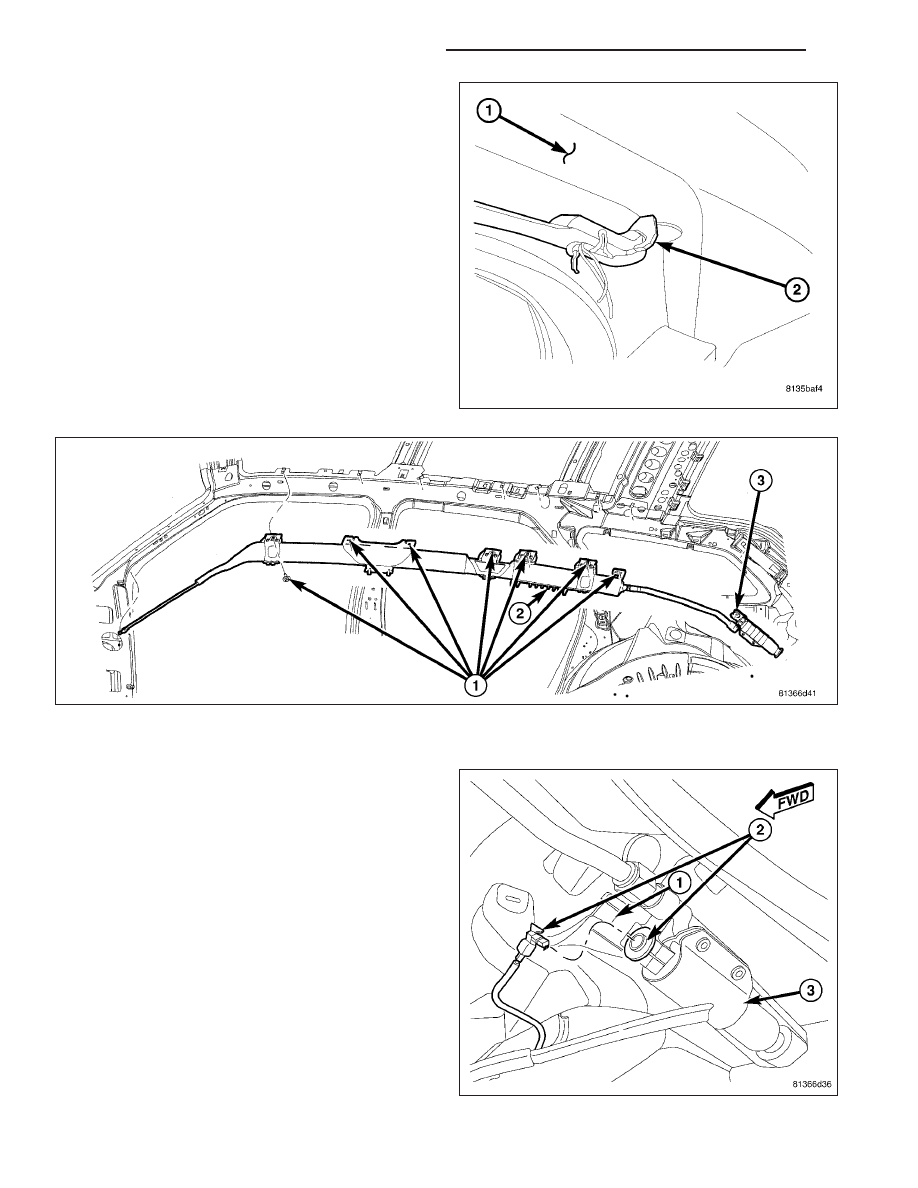Chrysler 300/300 Touring/300C, Dodge Magnum. Manual - part 744

3. Clip the front tether (2) to the A-pillar (1) and install
push fastener.
4. Install the screws (1) that secure the curtain airbag to the spring nuts in the roof side rail. Torque screws to 5
N·m (44 in. lbs.).
5. Connect the curtain airbag squib connector (2) to
the inflator (3).
6. Install the headliner into the vehicle (Refer to 23 -
BODY/INTERIOR/HEADLINER - INSTALLATION).
WARNING: Do not connect the battery negative
cable (Refer to 8 - ELECTRICAL/RESTRAINTS -
DIAGNOSIS AND TESTING - AIRBAG SYSTEM).
Personal injury or death may result if the system
test is not performed first.
8O - 382
RESTRAINTS - SERVICE INFORMATION
LX